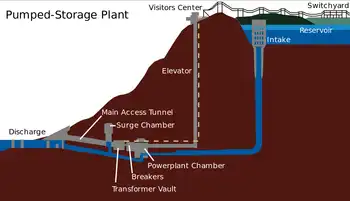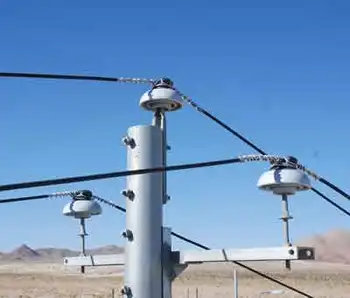Renewable energy in for a bumpy ride
By Sunday Herald
Substation Relay Protection Training
Our customized live online or in‑person group training can be delivered to your staff at your location.

- Live Online
- 12 hours Instructor-led
- Group Training Available
Both there and at an interview with the Sunday Herald beforehand, he raised concerns about ScottishPower's ability to invest in the UK electricity network. These feed into several other troubling themes that cast serious doubts on the UK's ability to meet its targets for 40% renewable electricity by 2020 (and 50% in Scotland) and an 80% reduction in carbon emissions by 2050.
ScottishPower owns the transmission network in central Scotland and northwest England, and will therefore play a big part in upgrading the grid so that it can cope with all the wind farms and other renewable generators that have to be attached if the targets are to be met.
The company makes money partly by charging other electricity companies for using this network, but the price that it and other network owners can charge one another is capped at a level that produces a 4.9% return on the cost of the investment.
Galà n says, in halting English, that Iberdrola "wants to" make new network investments and is pleased that politicians see it as part of the solution for reigniting the economy, but he argues that the credit crunch has made lenders more risk averse. This has meant that the existing rate is no longer high enough to enable companies such as ScottishPower to borrow the money for the upgrades, which echoes a recent report by Ernst & Young that said that rates of return on electricity projects would have to rise by a couple of percentage points to keep investor cash viable.
"I don't know if British banks will provide the money to make the investment," he says.
He contrasts this with the U.S., where the Obama administration is to subsidize Iberdrola's project to build an interconnection line between Canada and Maine, as part of a $4.5 billion (£3.1bn) programme to build a smart grid' that is more efficient and produces fewer carbon emissions.
"Obama is always talking about the energy dependency of the U.S. and investing heavily in electricity infrastructure," he says.
"The normal rate of investment is 10% to 11%. The authorities have increased the rate of return to 12.9%. This means we can raise money for doing those things."
Iberdrola doesn't necessarily expect rates this high in the UK, but the implication is that if either the government or Ofgem doesn't give ground, investment could go elsewhere.
A UK Department of Energy spokesman disagrees that there is an issue here, pointing out that £4.7bn of investments in network infrastructure upgrades by the big six companies are already underway, but Galà n's comments surely point to potential problems in future. If this can be multiplied across the sector, the renewables targets begin to look somewhat wobbly.
And as it turns out, it is not just in networks that there are question marks over investments, even though you might have thought other areas would be less problematic because electricity companies should be able to make up any shortfalls by increasing consumer fuel bills.
One key issue is the carbon price, which has fallen from rates of between 30 (£28) and 40 (£38) per tonne a year ago to well under 10 per tonne today. The cheaper the price of carbon, the lower the value of the carbon credits that renewable energy owners receive in the carbon trading scheme, and the lower the incentive for companies to invest in the area.
Duncan Conybeare, a senior manager in the power and utilities department at E&Y, and one of the main authors of the report mentioned earlier, believes this is already having an impact.
"It's making it harder to justify investment decisions in low carbon technologies. What we are beginning to see is utilities postponing some of their investment decisions, although not yet cancelling them outright," he says, citing electricity group E.ON as an example.
Walter Carlton, an energy specialist at Deloittes, has not seen signs of postponements himself, except at the level of microturbines for communities, but he certainly agrees that the lower carbon price is affecting the investment picture for renewables.
"It means lenders and shareholders need a higher rate of return to make up for the increased level of risk," he says. This in turn will reduce the likelihood that as many projects will go ahead.
Conybeare says electricity producers are lobbying for a floor to be set on the carbon price to make investment more predictable, but they shouldn't hold their breath.
According to the UK energy spokesman, minister Ed Milliband favours waiting until the next phase of carbon trading begins in 2013 and controlling the price at that time by being less generous with the allocation of free' carbon through EU carbon permits.
Beyond this, there are other concerns surrounding upcoming technologies. On offshore wind, where several farms have been setting up in England and numerous concessions were recently granted both there and north of the border, Scottish Gas owner Centrica has been making worrying noises about costs being much higher than expected, while there is still much uncertainty about how well existing technologies will work in deeper waters.
These concerns are likely to push up the risk premium on investment money, according to Walter Carlton, which is likely to be one reason why BP and Shell both recently announced they would focus purely on the US for offshore wind, where the returns are better (Shell has since said it is completely pulling out of all renewables except biofuels).
There are also foreseeable knock-on effects on other areas of investment. This is because the cost concerns are leading to renegotiations between the offshore wind industry and the government about increasing the level of subsidy through the renewable obligation certificates system, which gives producers credits for their output that they can sell on the open market. If they get more, it makes other electricity investments relatively less attractive and forces investors to reconsider their options.
As Carlton puts it: "What's the impact on other forms of generation that haven't had that increase? How does it affect the nuclear case, for example?"
He adds that the situation becomes even gloomier for more distant renewable technologies such as tidal power and clean coal. On the latter subject, Galà n was very enthusiastic, since ScottishPower is leading one of three consortia vying to win a design competition being held by the UK government that will award £1bn to the winner to build a demonstration model of the technology on a 300MW unit by 2014.
ScottishPower is bidding to build its model at the coal-fired Longannet power station in Fife, which would capture the carbon emitted, turn it into liquid and transport it to the North Sea to be stored in porous rocks. The idea is that this demonstration would stimulate the market, drive down prices and get the technology off the ground in time to benefit the 2020 targets. Such a result is particularly vital for the Scottish government, whose policy of opposing a new generation of nuclear power partly rests on quick development of clean coal.
While Galà n concedes that the investment climate could have a negative impact on clean coal, Carlton says: "Technologies like tidal and clean coal are the ones that will probably suffer the most because there is a tendency to go with the easy options.
"At a time when finance is more costly and less available, it will probably divert from the more exotic forms into the stuff that has a more certain rate of return."
The overall picture is that the credit crunch could be seriously bad for the environment, which is ironic given that the drop in industrial demand is lowering emissions.
Having spent so many billions on the banks, the UK government seems reluctant to commit new money to this sector, but it might have to do something if it is to ensure that 21st-century electricity is still attractive enough to justify private investment in these tough times.
As the targets draw closer and the capital climate remains difficult, the UK's relationship with renewables could be in for a bumpy ride until a compromise is found.











